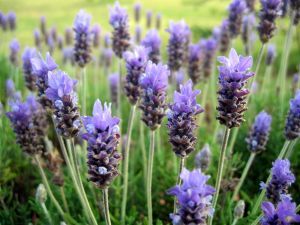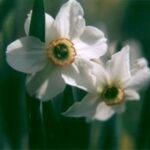Sweet scented spikes in shades of violet, Lavender’s delicate foliage and subtle bouquet provides an elegant summer show.
Lavender is prized for both its fragrance and its color. The three main species are English, Spanish, and French.
English Lavender features long grey or light blue stems that grow delicate flower spikes in late summer. The deepest purple of all Lavenders is ‘Hidcote’, which boasts fragrant silvery foliage.
Spanish or Italian Lavender is an early summer bloomer. It is stockier, with dense, plum-colored blooms on 50cm stems. White and mauve varieties are also available.
French Lavender blooms in vibrant purple all summer in mild areas, and grows into dense mounds. It is the best Lavender for zones 3 to 5.
Lavender thrives in poor soil that other plants might find challenging. It does well in containers because it needs little maintenance.
Add elegance to a rock garden with ‘Munstead’, a dwarf English variety that grows just over 30cm tall.
Adorn a terracotta pot with a single variety of Lavender for a simple, yet spectacular, blooming show.
Fill a raised bed with herbs, featuring lavender as a low, aromatic hedge. Prune the Lavender plants to keep them in a tidy shrub form.
Its silver grey foliage and straight stems make Lavender an excellent candidate for complementing the shapes and colors of other plants.
Low-growing Woolly Thyme and pink-blooming Creeping Thyme can carpet a Lavender filled rock garden. The trio will provide soft sweeps of color.
Culinary herbs, such as Rosemary, Oregano, and Sage, thrive in the same sunny sites and dry soils that Lavender prefers.
Shades of soft pink and light blue blend well, with the grey foliage of Lavender. For a soothing color scheme, consider combining Lavender with blue cornflower, dianthus, and magenta, blush pink, or white Yarrow.
To plant Lavender:
1. In spring, dig a hole twice as large as the root ball of the seedling. Add two handfuls of sand. In clay soil, use gravel instead of sand.
2. Plant the Lavender at a slightly higher level than it grew at in the pot. Add more soil and sand to the hole to raise the plant it necessary.
3. Fill around the plant with more sandy soil so the plant seems to be growing out of a slight mound, about 2 cm higher than ground level.
4. Water thoroughly and mulch with gravel to block weeds. Avoid mulches that retain moisture, such as pine bark chips or compost.
5. In early spring, before the Lavender plant starts actively growing, prune back to about half its size, cutting out all dead stems.
It is easy to increase your supply of Lavender by taking cuttings at any time between spring and late summer. Cut 10cm long pieces of stem, remove flowers and lower leaves. Plant in a pot of sandy soil and keep damp. Rooting takes about a month, then they are ready to plant out in the garden.
Secrets of success
Buy potted plants in late spring with a label that identifies the variety. Look for stiff, upright plants.
Avoid soft or yellowing plants that show signs of rotting in the center. They have been watered too much and may not recover.
Lavender plants thrive in cool or dry summer climates as long as they receive direct sun.
Do not add compost or peat moss to the planting hole because Lavender prefers a thin, gritty soil.
Harvest the first flower spikes just as color begins to show. Cut off as much stem as possible to foster another set of blooms.
The perfumed flower spikes can be used in linen drawers, or in the pockets of clothes to deter moths.
Seasonal tips
In early spring trim bushes halfway, taking care not to cut into old, leafless stems.
In spring pinch young shoots to keep bushes compact. Stop when the flower buds appear. Start taking cuttings.
In summer, harvest flowers and scented foliage for drying. Trim off spent flowers to encourage more blooms, and keep bushes tidy.
In autumn trim off spent flowers if it is needed. The young plants from spring cuttings can be planted out now.







